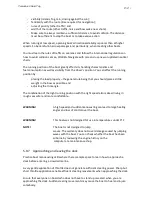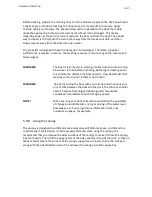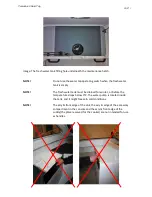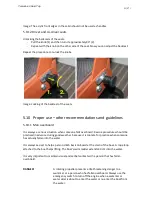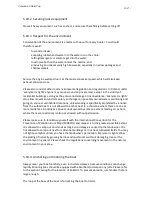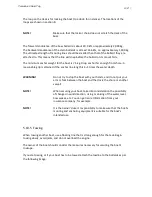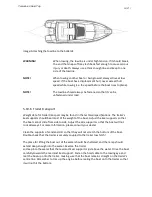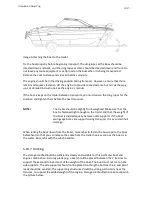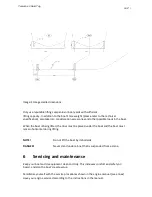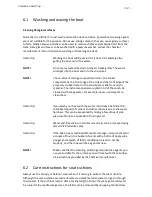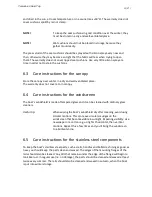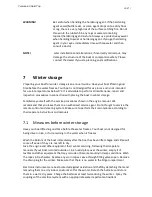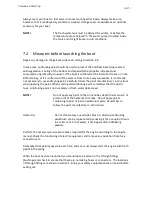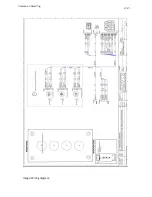
Yamarin 63 Hard Top
41 (47)
Always cover your boat so that water or snow cannot gather inside. Always make sure,
however, that it is adequately ventilated. A winter storage cover is available as an optional
accessory for your boat.
NOTE!
The fresh water tank must be drained for winter, or before the
temperature drops below 0°C. The water pump is located inside
the tank, and it might freeze in cold conditions.
7.2
Measures before launching the boat
Repair any damage to the gelcoat surface according to section 6.9.
In sea areas, antifouling paint should be used to prevent the hull from becoming covered
with vegetation. Fouling of the bottom and especially the propeller increases fuel
consumption significantly. However, if the boat is anchored at the inlet of a stream or in the
Bothnian Bay, or if it is lifted out of the water at least once every two weeks, it is normally
not necessary to use antifouling paint. Carefully follow the paint manufacturer’s instructions
when applying the paint. When sanding old antifouling paint, remember that the dust is
toxic. Antifouling paint is not necessary in fresh water (lake areas).
NOTE!
Do not apply any paint to the zinc anodes, depth finder sensor, or
piston rods of the hydraulic trim tabs. Do not apply paints
containing copper or lead on aluminium parts. Remember to
follow the paint manufacturer’s instructions.
Useful tip:
Do not throw away a used paint brush. A dried-up antifouling
paintbrush can be rejuvenated by soaking it for a couple of hours
in a mixture of 2 l hot water, 1 dl vinegar and 0.5 dl baking
powder.
Perform the necessary service procedures required for the engine according to the engine
manual. Check the functioning of electric equipment and remove any oxidation from fuse
connectors etc.
Remember that petrol goes stale over time, and you must always start the engine with fresh
petrol in the spring.
When the boat has been launched you should open all valves in the through fittings
(bushings) and check to ensure that there are no leaking hoses or connectors. The locations
of through fittings are shown in section 5. Bring your safety equipment back on board before
setting out.

